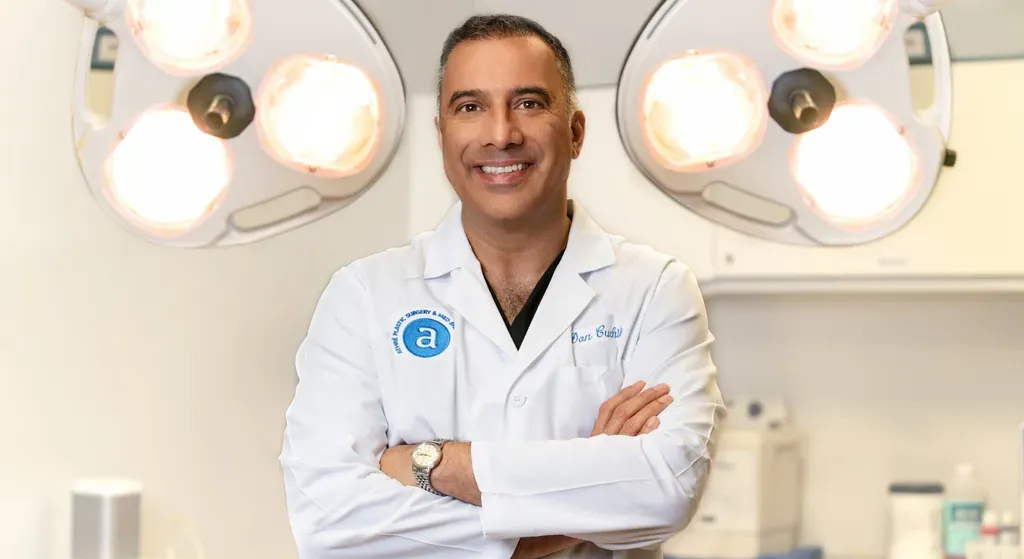
As we grow older, our skin, particularly around the face and neck, begins to lose elasticity which results in bags, wrinkles, and other signs of aging. One way to slow down this process is through cosmetic therapies and injections. Injections such as Botox® promise the recipient a younger and more attractive appearance, but how much do we really know about the product? The following covers the definition, history, process, and possible side effects of this popular injection procedure.
What is Botox?
According to the dictionary, botulism is “an illness caused by a potent bacterial toxin produced by Clostridium botulinum, which causes muscle weakness or paralysis.” Clostridium botulinum is a bacterium that produces the toxin botulinum toxin A (aka Botox) that scientists have used to cause a controlled relaxing of the muscles since the late 1980s, and has become what we know of as “Botox” today.
Botox injections are an FDA (Food and Drug Association) approved treatment. It contains a purified protein derived from the Clostridium botulinum toxin and is now the fastest growing treatment for wrinkles. In 2001, more than 1.6 million people received injections, an increase of 46 percent over the previous year. Botox is regarded by some as the ultimate fountain of youth.
The History of Botox
Botox was first approved in 1989 to treat two eye muscle disorders: uncontrollable blinking (blepharospasm) and misaligned eyes (strabismus). In 2000, the toxin was approved to treat a neurological movement disorder that caused severe neck and shoulder contractions known as cervical dystonia. An unusual side effect of the eye disorder treatment, doctors observed that the Botox softened the vertical frown (glabellar) lines between the eyebrows that tend to make the face look tired or angry. In 2002 the FDA had completed its review of studies indicating that Botox reduced these lines and granted approval to use the drug for these issues.
What Does Botox Treat?
Botox is injected to treat wrinkles on the forehead, between the eyes, and around the eyes (also known as crow’s feet). In order to do this, botox blocks signals from the nerves to the muscles, stopping the contraction of these muscles and limiting the ability to exhibit exaggerated facial expression causing wrinkles. Botox is never used to treat wrinkles that have been caused by overexposure to the sun because it simply isn’t effective in that way.
Botox injection can also be used for migraine headaches and can decrease sweating on palms, underarms, and at the hairline.
Process of Botox
During the Botox process, the patient stays awake and alert (no anesthesia required although your doctor may choose to numb the area with a cream or cold pack before injection). Your doctor or physician will inject botox into specific muscles with a very, very tiny needle. The Botox inactivates the muscles that produce wrinkles in this area by blocking the release of the acetylcholine chemical that transmits nerve signals to contract the muscle.
Possible Side Effects
Botox injections come with very few side effects. While allergy to any medicine is possible, it is very rare with botox. While a small amount of brow or lid droop is possible, it is unusual and can usually be avoided by not treating the area just above the outer portion of the brow. If it does happen — it will go away by itself quickly.
Post-Procedure Care
After the injection, ice can be applied to the targeted area that will reduce any swelling and discomfort. Patients can return to their routine life without delay. Ensure you don’t massage or continuously touch the treated area as this may cause bruising. Botox also cannot be used during pregnancy, breastfeeding, or on neurology patients.
As collagen is a protein, it is inevitable that your body will slowly absorb it. You might need another injection after several months for upkeep. This also depends on the location of the wrinkles that are being treated. Areas that you use very often may need another injection earlier than those you don’t use so often. For example, the area of your face near your mouth is most used because of the muscles you use when you speak. This portion may need an injection again sooner than in other areas.
At Athré Facial Plastics in Houston each injection is customized for a patient’s unique needs, and all injections are performed by Dr. Athré, ensuring patients receive more natural results with minimal downtime and bruising. Contact us today to find out more!



